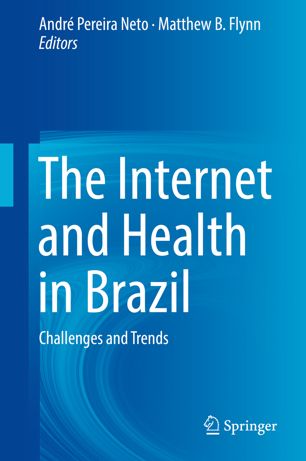

Most ebook files are in PDF format, so you can easily read them using various software such as Foxit Reader or directly on the Google Chrome browser.
Some ebook files are released by publishers in other formats such as .awz, .mobi, .epub, .fb2, etc. You may need to install specific software to read these formats on mobile/PC, such as Calibre.
Please read the tutorial at this link: https://ebookbell.com/faq
We offer FREE conversion to the popular formats you request; however, this may take some time. Therefore, right after payment, please email us, and we will try to provide the service as quickly as possible.
For some exceptional file formats or broken links (if any), please refrain from opening any disputes. Instead, email us first, and we will try to assist within a maximum of 6 hours.
EbookBell Team

5.0
48 reviewsThe popularization of the Internet, due in larger part to the advent of multifunctional cell phones, poses new challenges for health professionals, patients, and caregivers as well as creates new possibilities for all of us. This comprehensive volume analyzes how this social phenomenon is transforming long-established healthcare practices and perceptions in a country with one of the highest numbers of Internet users: Brazil.
After an opening text that analyzes the Internet and E-Health Care as a field of study, the book comprises six parts. The first part introduces the emergence and development of the internet in Brazil, its pioneering experience in internet governance, digital inclusion, and online citizen participation. The second part is dedicated to internet health audiences by analyzing the cases of patients, the young, and the elderly seeking and sharing health information online, especially in virtual communities. The third part is dedicated to the challenges that the expansion of the internet in healthcare poses to all of us, such as the evaluation of the quality of health information available online and the prevention of the risks involved with online sales, cyberbullying, and consumption of prescription medicines. The fourth presents some innovative e-learning experiences carried out with different groups in Brazil, while the fifth part analyses some practical applications involving the Internet and health, including studies on M-Health, the Internet of things, serious games and the use of new information and communication technologies in health promotion. The last chapter analyses the future of healthcare in the Internet Age.
The authors establish a critical and creative debate with international scholarship on the subject. This book is written in a direct and comprehensible way for professionals, researchers, students of communication and health, as well as for stakeholders and others interested in better understanding the trends and the different challenges related to the social phenomenon of the internet in health.